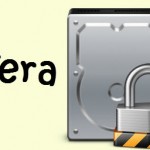

(0x0000000000 - a single hexadecimal digit is 4 bits ie. So I decided to look for 150 GB continuous file that didn't have 5 bytes of zeros. To move back from the current position, select "current position (back from)".Īnd you can easily move to the start and end of a block using and respectively. You'll have to enter the offset in bytes converted to hexadecimal (For eg: to move 1 GB forward from the offset you are in, enter "40000000" (1024 * 1024 * 1024 converted to hex) and select "relative to current position". You can move to another offset using the "Go to offset" option. To search a block for hex values check the "search in block only" in the "find hex values" dialog. To define blocks, right click the byte and select "beginning of block" to set the starting point and go to another byte and select "end of block" to set the ending point. so considering that the file was continuous, other than my container, how many data streams could contain 150 GB worth of pseudo random bytes without a few bytes of 0's in a 1 TB HDD?Įven if you haven't used WinHex before, it has an intuitive interface and doesn't take a genius to figure it out. so,ġ) The file I was looking for was not fragmented.ģ) It was an encrypted truecrypt container.Įncrypted truecrypt containers are completely filled with pseudo random data. And truecrypt volumes do not have any kind of signature that can be used to identify them
#Truecrypt hidden volumes full version
The first thing you need to do is get a copy of the full version of WinHex somehow (I'm 17 so I couldn't exactly buy it ) I didn't have a backup copy of the container nor did I have a backup of the header. ()Ģ) the start OR the end of the file being next to a group of zeroes.ģ) you know the password to the container About 2 weeks ago I managed to recover the truecrypt volume so I though I'd help out someone else who has gone through the same problem. I explained how I ran the Diskpart clean command in the wrong drive.


 0 kommentar(er)
0 kommentar(er)
